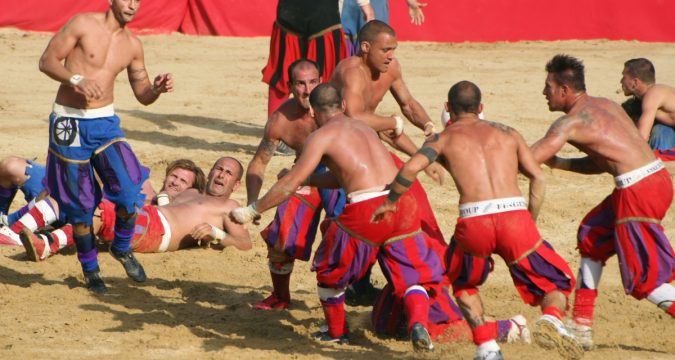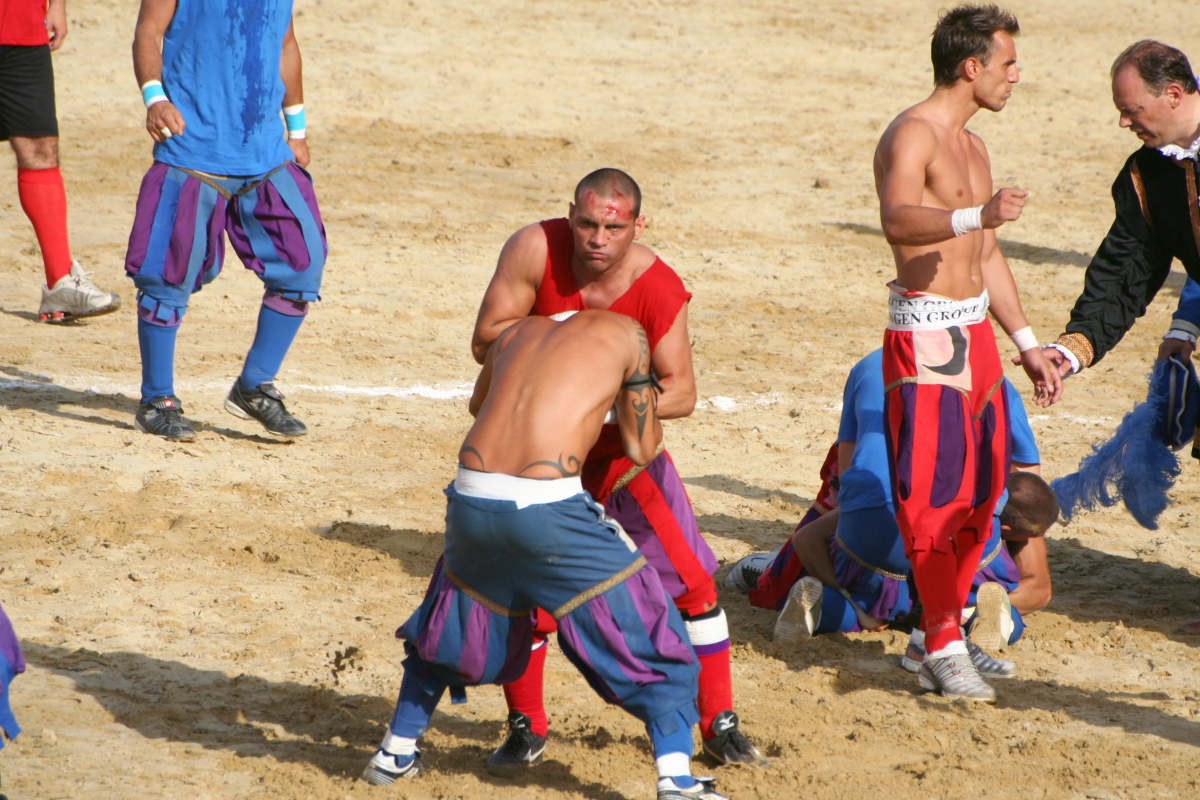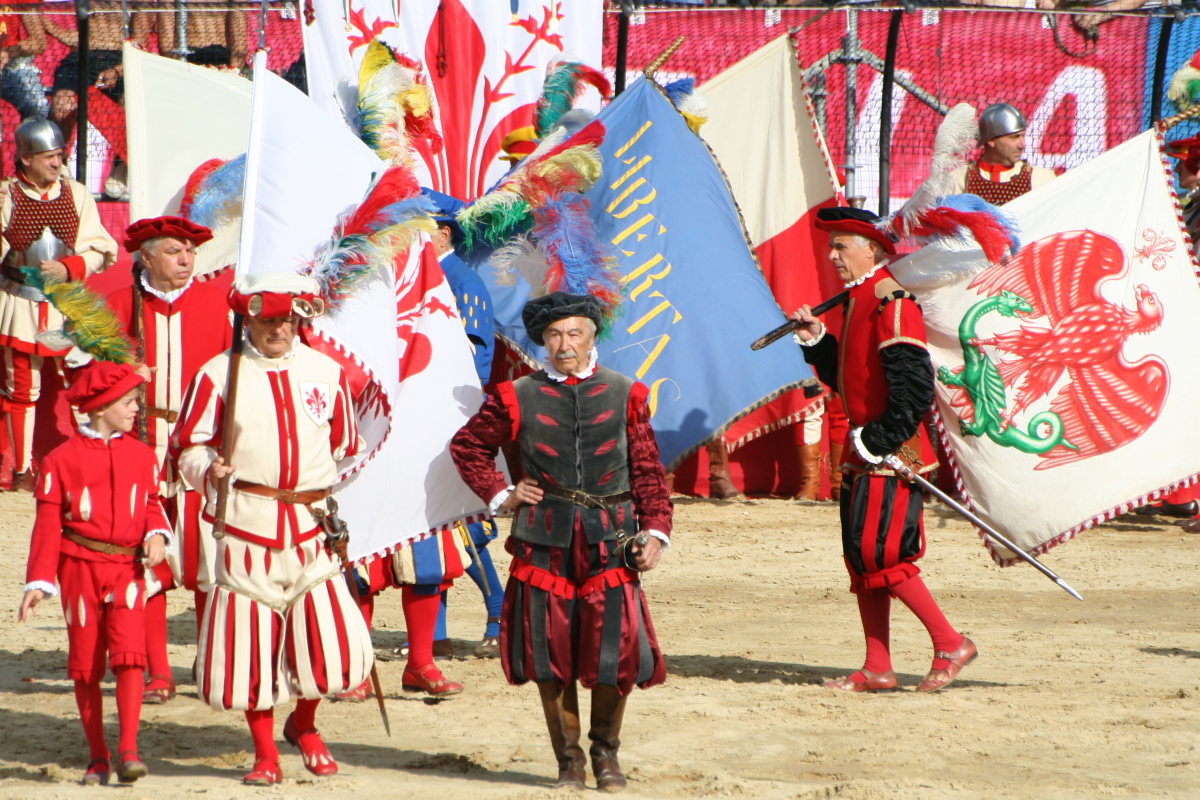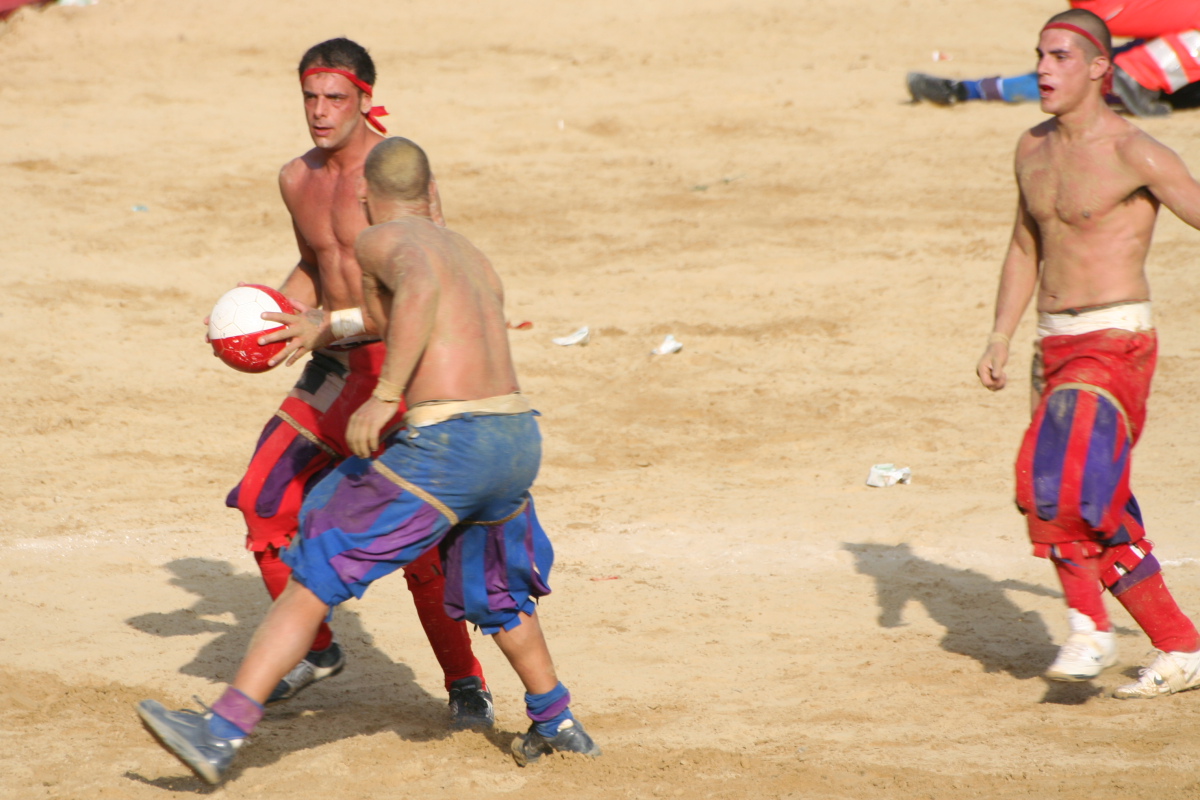
There aren’t many things that would make a prop forward cower in the corner, but we might have just found something!
That accolade goes to Rugby League’s distant Italian cousin – Calcio Storico Fiorentino or ‘historic Florence football’ – a sport which combines skills from rugby, soccer and contact disciplines including boxing and MMA.
It’s rules are very straightforward, the winner of the game is decided by the team who scores the most goals, but the means of stopping the opposition scoring are frankly extreme. Head-butting, punching, tripping, wrestling and choking are within the laws of the game and only sucker punches and kicks to the head result in a foul.

In essence, Calcio Fiorentino makes Rugby League look like a League of Gentlemen, as its brutality has been embraced by those brave enough to take to the Santa Croce square in Florence. Its physical nature has seen the sport become a YouTube sensation (admit it, we’ve all typed in ‘Rugby League’s biggest hits and fights’ before now) but not everyone in Italy accepts the game.
“Italy is slowly starting to appreciate the game because of videos going viral online every time they are uploaded,” Caclio Storico competitor Fabrizio Valleri told Total Rugby League.
“The brutality and the violence of the game are still not widely accepted by everybody in the country though even in Florence.
“The game is very physical since it basically has no rules. The players are not fair like they are in soccer (there’s no fair play here!) but we stick to an old cavalleresc sentiment called la cavalleria.”
‘La Cavalleria’ is a gentleman’s handshake that sees players remain sensible with the physical contact, often allowing players to return to their feet, but there have been instances of the sport turning ugly in recent years.
The 2017 edition saw the semi-final of the competition, played between La Sants Croce Azzurri abandoned after just and Santo Spirito Bianci, abandoned after just 15 minutes after the game descended into anarchy.

Riot police were on hand to temper the situation, after one player punched the referee, sparking a huge brawl involved all 40 players on the field. Such scenes have seen many question whether the sport is still contemporary, but its deep roots in the region spanning back to the 16th Century have seen it preserved.
“The sport is a huge part of the local area, as is the celebrations and festivals that come alongside it and we are all honouring a part of Italy’s history,” explains Valleri.
“But I was very interested after I watched my first game in 1984 at the age of nine, and I got the chance to be part of it in 2004 when I was 27 when a friend persuaded me to join in.
“I was born and raised in Santo Spirito in Florence, so the sport was a big part of my local neighbourhood.”
But the sport has expanded itself beyond the local region, so much so that applications from across the globe have been received to taste what is often described as one of the most brutal sports on the planet.

In 2018, however, the organisers restricted the number of foreign players allowed, to maintain the local pride.
“I have trained with players from countries from all over the world, the UK, USA, Albania, Macedonia, Cuba, Senegal, Cameroon and Iran,” adds Valleri. “But now there are only Florentines allowed and residents of Italy for over ten years.”




